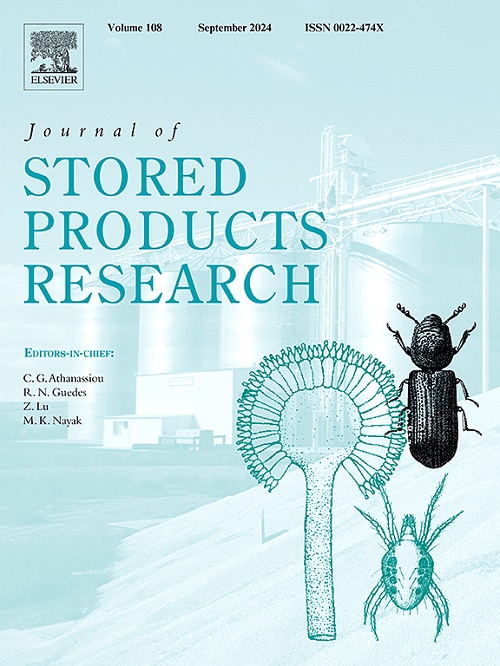Application evaluation and 4E analysis of PV/T assisted with direct drying chamber system
IF 2.7
2区 农林科学
Q1 ENTOMOLOGY
引用次数: 0
Abstract
To reduce drying energy consumption and improve the efficiency of solar energy utilization, a PV/T assisted with direct drying chamber system (PVTDS) was proposed in this study. The feasible of system were analyzed by drying sweet potato experiment, and the energy-exergy-environment-economic analysis were adopted to evaluate the sustainability of this system by comparing with open sun drying. Furthermore, the applicability of the photovoltaic-thermal collector in China was also analyzed using TRNSYS software. The results shown that the average drying rate of PVTDS was 0.08 (g/g)h−1 higher than that of open sun drying. The page model was found to the best suitable way to describe sweet potatoes drying in the system with R2 value 0.99929, RMSE value 0.00795 and χ2 value 0.00006. The total thermal efficiency of photovoltaic-thermal collector ranged from 24.5 % to 84.6 %. The specific energy consumption of drying system was 4.85 kWh/kg. The exergy loss of photovoltaic-thermal collector varied from 282.6 W to 1915.6 W. The CO2 net emissions reduction of the system was 1.68 tons per year. The investment payback period of the system was 2.62 years. Finally, the performance of the photovoltaic-thermal collector simulated by TRNSYS software has been proven by test experiment with a high accurate, the system applicability days and system performance coefficients of typical cities in the China five building climate regions are given through simulation. The results of this study can provide theoretical and practical guidance for the application of the system in China.
PV/T辅助直接干燥室系统的应用评价及4E分析
为了降低干燥能耗,提高太阳能利用效率,本研究提出了PV/T辅助直接干燥室系统(PVTDS)。通过红薯干燥试验分析了该系统的可行性,并通过与露天晒干的比较,采用能源-能源-环境-经济分析对该系统的可持续性进行了评价。此外,还利用TRNSYS软件分析了该光伏集热器在中国的适用性。结果表明,PVTDS的平均干燥速率比露天晒干高0.08 (g/g)h−1;结果表明,page模型最适合描述系统中红薯的干燥过程,其R2值为0.99929,RMSE值为0.00795,χ2值为0.00006。光热集热器的总热效率为24.5% ~ 84.6%。干燥系统比能耗为4.85 kWh/kg。光热集热器的火用损失在282.6 ~ 1915.6 W之间。该系统的二氧化碳净排放量为每年1.68吨。系统投资回收期为2.62年。最后,通过测试实验验证了TRNSYS软件模拟的光热集热器的性能具有较高的准确性,并通过模拟给出了中国五大建筑气候区典型城市的系统适用天数和系统性能系数。研究结果可为该系统在中国的应用提供理论和实践指导。
本文章由计算机程序翻译,如有差异,请以英文原文为准。
求助全文
约1分钟内获得全文
求助全文
来源期刊
CiteScore
5.70
自引率
18.50%
发文量
112
审稿时长
45 days
期刊介绍:
The Journal of Stored Products Research provides an international medium for the publication of both reviews and original results from laboratory and field studies on the preservation and safety of stored products, notably food stocks, covering storage-related problems from the producer through the supply chain to the consumer. Stored products are characterised by having relatively low moisture content and include raw and semi-processed foods, animal feedstuffs, and a range of other durable items, including materials such as clothing or museum artefacts.

 求助内容:
求助内容: 应助结果提醒方式:
应助结果提醒方式:


